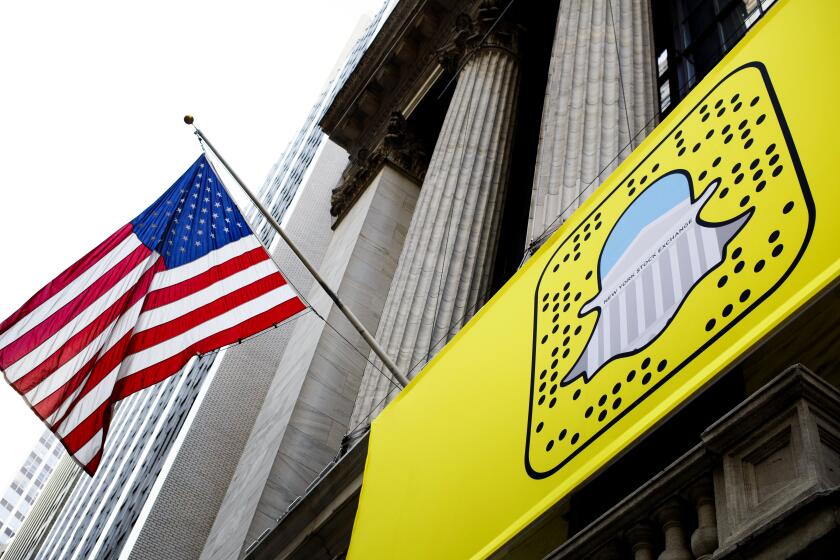Mutual Fund Frenzy : Congress Casts Suspicious Eye as Banks Aggressively Enter the Fray
D. Linn Wiley runs a small bank, but he’s not afraid to tackle Wall Street to protect his turf.
Wiley is president of Chino Valley Bank in Ontario, which has joined hundreds of other banks nationwide by rushing into the mutual-fund frenzy. Customers in Chino Valley’s 16 branches can now buy stocks, bonds and money-market shares in Putnam and other familiar Wall Street mutual funds.
Banks big and small are aggressively peddling mutual funds because they’ve watched billions of dollars of their customers’ deposits drain into Wall Street funds in recent years as interest rates have fallen. The mutual funds also provide banks with welcome fee income at a time of sluggish loan demand.
“I’m a practical man,” Wiley said. “I try to do business within the realities in the marketplace.”
The biggest reality facing Wiley and other bankers is that savers--turned off by meager yields of 3% to 4% on certificates of deposits and other bank accounts--are taking their cash to mutual funds in record numbers to earn a higher return.
“When you look at what you can get from your bank, it’s very undesirable,” said Avi Nachmany, an analyst with the research firm Strategic Insight in New York.
As a result, total mutual-fund assets--which reached $1 trillion only three years ago--now exceed $1.8 trillion, according to Lipper Analytical Services.
Possibly as early as next year, assets in mutual funds are expected to exceed the $2 trillion the public keeps in time deposits--savings accounts and CDs under $100,000--at all of the nation’s banks and thrifts, according to Prudential Securities.
“These are shocking figures,” Prudential banking analyst George Salem said in a recent report.
Mutual funds have been available through banks for more than a decade, but it wasn’t until the late 1980s that regulators relaxed existing securities rules to enable banks to both sell and manage their own funds. That permission, together with the soaring growth of mutual funds in general, triggered a race among banks to peddle their funds more aggressively.
With their own funds, banks not only get the initial commission, or “load,” paid by a fund investor--a load of 3% to 4.5% of the amount invested is typical--but they also earn continuous fees for managing the investments.
At the end of May, assets of bank-managed funds had jumped 25% to nearly $200 billion in only 18 months, according to Lipper. Banks now account for 11% of total fund assets nationwide.
But the growth of bank funds is somewhat misleading, said Matthew Fink, chairman of the Investment Company Institute, a trade group that represents the mutual-fund industry and has often been at odds with banks because of the heated competition for customer savings.
According to Fink, bankers say “the lion’s share” of the growth reflects banks simply shifting cash in their custodial and trust accounts into their new mutual funds, as opposed to new sales made by their marketing staffs.
Regardless, the sharp climb in banks’ fund assets is unsettling some powerful members of Congress, who are still smarting from the ill-fated diversification by many savings and loans during the 1980s that ultimately led to an industry bailout at taxpayer expense.
In May, Reps. Henry B. Gonzalez (D-Tex.) and John D. Dingell (D-Mich.) asked the General Accounting Office to study the implications of the banks’ fund surge. Gonzalez is chairman of the House Banking Committee; Dingell heads the House Energy and Commerce Committee.
“The money going into these funds represents a massive financial hemorrhage from traditional deposit accounts at banks and thrifts,” Gonzalez wrote in a letter to Comptroller General Charles A. Bowsher.
“Congress needs to know what this trend means for consumers, the banking industry and our nation’s economy.”
The congressmen outlined several other concerns as well. Among them:
* How well do the banks’ customers realize that their mutual-fund dollars are not protected by federal deposit insurance (as savings accounts are, up to $100,000)?
That concern stems from the shadow of Charles Keating Jr. Customers of Keating’s Lincoln Savings said they were duped into buying junk bonds from Lincoln Savings’ parent company with assurances that the securities were safe, only to see them rendered worthless when Lincoln collapsed in 1989.
Just last week, the comptroller of the currency, Eugene A. Ludwig, tightened bank rules to ensure that customers don’t mistakenly think their funds are insured.
* Is the flow of cash out of bank deposits into mutual funds contributing to a credit crunch, since the money is no longer available for bank loans?
* How will banks’ fund customers react when Wall Street’s next bear market arrives? Would a prolonged slide in stocks or bonds trigger a consumer backlash against the banks, destabilizing the banking industry?
No one is suggesting that banks not be allowed in the mutual-fund business. And it would be unfair to block the banks’ efforts, said Harry Keefe, a veteran banking analyst in New York.
“Why don’t banks have the same right to the nation’s savings business as (mutual-fund giants) Fidelity Investments or Dreyfus?” Keefe asked.
Banks, meanwhile, dismiss many of Congress’ concerns. They aren’t worried about having too little cash to lend, saying they could simply raise bank savings rates to lure in more deposits or purchase “brokered” deposits from institutional investors.
“I don’t have a large concern about deposits going into funds and, therefore, implying a reduced amount of money available for loans,” said Kevin Ferrell, mutual-fund director for BankAmerica Corp., whose Pacific Horizon family of funds managed $18 billion in assets as of June 30.
Banks also say that when the stock market tanks, some fund investors will bring their money back to CDs and other bank accounts. But others merely will shift into bond and money-market mutual funds to ride out the stock market’s slump; that’s why it’s crucial that banks have various funds available, bankers say.
Investors “are becoming much more sophisticated,” said Michael Johnson, senior vice president for investment products at First Interstate Bancorp, whose fund group is called Westcore.
Giving investors full disclosure about their funds’ lack of federal insurance is also a priority, the banks say.
After hearing a sales pitch from a First Interstate agent, Johnson said, “there would be no doubt in your mind” that its funds carry no protection.
In any event, the banking public now demands investment choices, bankers say.
“Now that we’ve exposed them to these alternatives,” said Johnson, “we’re kidding ourselves if we think they’re going to be satisfied with traditional bank products.”
The Largest Banks’ Fund Assets
Here are the mutual fund assets managed by the nation’s largest commercial banking companies. The amounts exclude sales of outside funds made through the banks’ offices.
Fund assets Fund assets Name of bank’s at 6/30/93 at 12/31/89 Bank fund group (billions) (billions) Citicorp Landmark $ 3.6 $ 1.1 BankAmerica Pacific Horizon 18.0 4.1* Chemical Banking Hanover Investment 3.2 0.0 J.P. Morgan Pierpont 4.3 3.2 NationsBank Nations 10.0 1.0** Chase Manhattan Vista 3.7 0.8 Bankers Trust NY Bankers Trust 3.5 0.7 Banc One One Group 4.2 0.2 First Union First Union 3.0 0.2 Wells Fargo Stagecoach/Overland 7.4 0.3***
*Assets of Security Pacific National Corp., which was bought by BankAmerica in 1992. BankAmerica previously had no funds of its own.
**Assets of NCNB Corp. before it acquired C&S;/Sovran in 1992 to become NationsBank.
***Assets of Overland funds only; Stagecoach group formed in 1992.
Source: company reports
Banks’ Growing Role in Mutual Funds
Commercial banks are stepping up their sales of mutual funds to keep customers’ deposit from shifting to funds managed by others. Banks now account for 11% of the fund industry’s total assets.
Total Mutual Fund Assests (In billions)
1993*: $1,791
Mutual Fund Assets Managed by Banks (In billions)
1993*: $197
*As of May 31
Source: Lipper Analytical Services







